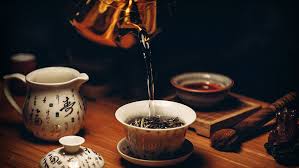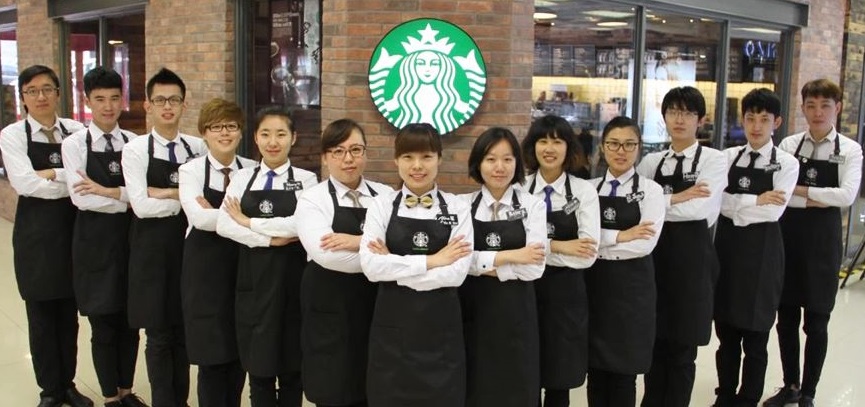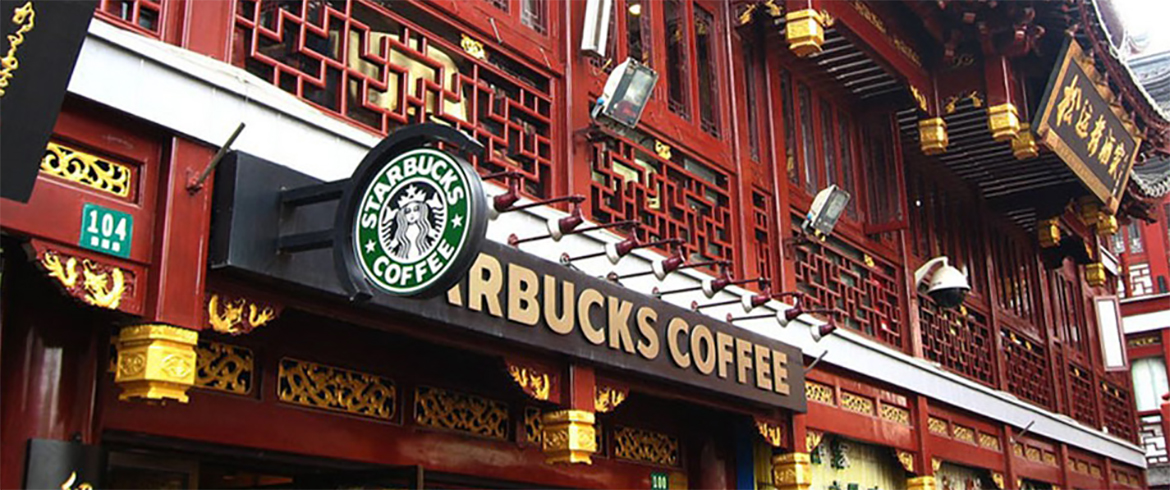The Story of Starbucks: Coffee vs. Tea Culture in China
Caffeine is one of the highly used stimulants for the majority of the population in the western countries, and coffee is one of them. Being one of the most preferred beverage intakes around the globe by students, adults, coffee is second in commodity demands around the world.

The coffee industry is growing at a tremendous rate of 5.5% of compound annual growth. With the upcoming of the millennials, the consumption level for coffee have increased nearly ten percent across global markets. The growth is largely contributed by China, United States, Panama, Kenya, and Senegal.
According to Statista, in 2015, Starbucks is the largest coffee house chain across the world with over 22,000 chain stores, and McDonald’s to second with nearly 5,000, a quarter of what Starbucks have. With China being one of the most populated countries with high contributing consumption levels of coffee, how did Starbucks conquer the cultural differences with the long-coming herbal and tea culture of China?

How Starbucks Began
Starbucks was first founded in 1971 in a small coffee store in Seattle selling coffee beans. In 1983, Howard Schultz joined Starbucks as director of retail operations and marketing. Schultz changed the game for Starbucks by incorporating in-house coffee services by offering brewed coffee and espresso beverages using Starbucks coffee beans in 1981. As a coffeehouse, Starbucks strives to grow globally.
Starbucks first expanded into other regions in North America, then Japan and Singapore, then Philippines, then other western and eastern regions. In 1999, Starbucks opened its first location in Beijing China. With the emerging millennials and middle class of the Chinese population, Starbucks foresees a perfect timing.

Now nearly two decades later, China have more than 3,400 locations in 140 cities, that’s nearly one-fifth of the Starbucks coffeehouse chains from 2015. Starbucks is also aiming to build another 3,000 new coffeehouses in China over the next few years, nearly doubling the number of coffee shops.
Cultural Clash
China is very well-known for its long-coming tea culture for its health benefits, there are nearly hundreds of tea varieties including mixed tea.

Before entering the beverage market in China, Starbucks have surely completed its own homework to do research on the traditions, habitual behaviours and growing trends of China to finalize their solutions in order to grow rapidly.
Starbucks did not present itself as a rivalry to the tea culture for consumers to prefer one or the other, but an emergence of multiculturalism in China. Starbucks introduced a different culture, a western experience, while incorporating different aspects of the Chinese culture into its coffeehouses in China. For example, green tea. Green tea is an essential tea for most local households with its beneficial antioxidants in the tea culture.

Different Region, Different Targeting
Although China is one big country itself, there are different cultural values and practices between different regions, northern china is quite different from southern china. A strategy to suffice for the cultural difference between regions, Starbucks partnered with local businesses in different regions of China to gain insight on various market characteristics, such as taste.
In Northern China, Starbucks have partnered with Beijing Mei Da Coffee company for a joint venture. In Eastern China, Starbucks partnered Uni-President, lastly in Southern China, Starbucks is working with Maxim’s Caterers in Hong Kong. One of the great advantages of partnering with local businesses is that each partner can demonstrate different practices suited for each region for Starbucks to quickly emerge into the Chinese market, without an extended learning curve.
A Breath of Fresh Air
Consumers in China are very familiar with the promotional culture, where many of the businesses will uphold sales and promotions to rapidly gain audiences. As a global growing coffee chain, Starbucks have displayed their differences as a brand by introducing their unique philosophy/story to the Chinese consumers, simply focusing on brand awareness and traffic.

Another aspect of Starbucks that have set them apart from other competitors in the industry is the western experience with the simplistic but chic interior, upbeat but relaxed environment, strongly appealing to the younger generations with the ideals of a modern lifestyle. As many Chinese people think highly of the western cultures, many are willing to pay the premium price for the premium experience.
Internal Management
An additional factor that Starbucks focuses on to provide the premium experience for Chinese consumers that set themselves apart from others are their on-going trainings. Barista and servers are professionally trained in the beginning of the employment to ensure consumers receive the best possible experience.

Great business begins with great people, Starbucks have been consecutively been recognized as the “Aon Best Employers” in China for the fourth time since 2014. This recognition showcases the physical commitment and emotional attachment for the brand consistently by its employees. Starbucks have put forth many employee benefits early on to attract highly motivated employees for long-term employment, allowing employees to be invested within the brand.
Starbucks Marketing
Starbucks consistently follows the general outline of the brand image to provide one of a kind experiences for consumers in China. The marketing strategies of Starbucks focuses on the brand awareness and visibility over a long period of time to educate consumers of the brand story and steadily gain loyal customers. Unlike many businesses in China, Starbucks rarely do promotional events, likewise in other countries, making promotional times be presented as more exclusive than ever. With the brand insisting on following its brand image and style, Starbucks stands out from other brands more than ever.
Starbucks also consistently invest in public benefits to give back to the communities, whether it is in China or not. One of the advantages of community involvement is the level positivity, including class and sophistication, it brings to the brand, which helps Starbucks to extensively be visible to the middle-class.
Lastly, although Starbucks very much stand by their own brand image, Starbucks China in the more recent years after building their brand in China, is incorporating some aspects of the Chinese traditions into their chain, bringing in multiculturalism. Starbucks have opened a few exclusive and unique Starbucks locations around different regions with different unique styles to bring exclusiveness to each region. For example, one of the Starbucks in Chengdu, China have fully incorporated the traditional household and tea house design to the location, bringing in many new travelers from different regions of China and the world to experience the one-of-a-kind environment from Starbucks that cannot be attain from elsewhere.

Aside from all contributing factors above, there are several other minor factors that have also contributed to the success of the Seattle coffeehouse chain in China, such as the cultural perspective of the western culture. The western culture is highly evaluated by the Chinese culture, often deemed as higher quality and higher class, which also often appeals to many middle-class and younger generation in the recent decades, leading to its greater success for Starbucks. Starbucks, over a decade and some after entering China, have not outcompeted most coffeehouse in China, as one of the leading beverage brands contributed by their strong presence and consistent brand image. We can look forward to Starbucks fulfilling their promise of 3,000 new stores in the upcoming years.









